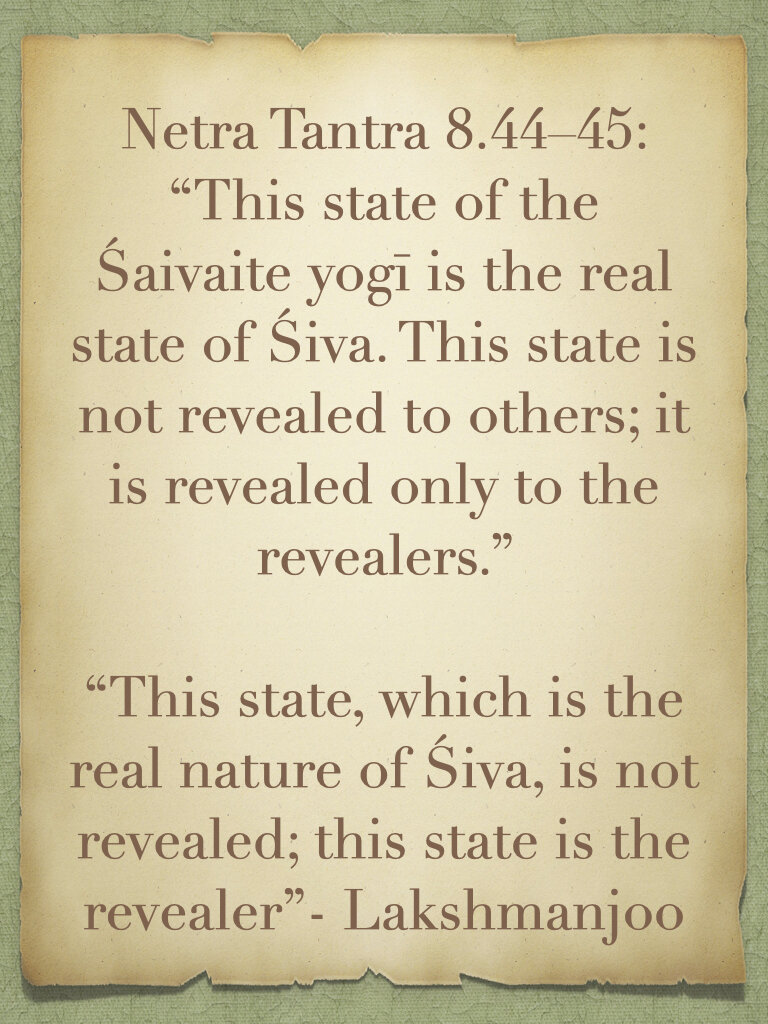Philosophy: The Real Seat of Awareness: Shiva Sutra 3.16
If you couldn’t catch us live online via the Thursday class, please enjoy the podcast, or press play on a classic class from the Shiva Sutras below.
3.16: āsanasthaḥ sukhaṁ hrade nimajjati // Seated in that real posture, he effortlessly dives in the ocean of nectar.”
Sutra 3.16
1. We begin the sutra with a commentary that yoga practices alone are not enough to take you to the experience of your true nature. The example given is the Yogadarśana, the eight limbs of yoga. The 8 limbs of yoga begin with Yamas, or how to interact socially as a yogi through non-harm and non-greediness, for example, and then moving on to the Niyamas, how to work with yourself as yogi through cleanliness of mind and body, divine conduct, etc. And once those are established, the practitioner begins asana, the physical postures of yoga, pranayama, the breathing practices, pratyhara, concentration practice, and dhyana, meditation.
These practices beneficial and essential aspects of our path to growth, but we are learning in this Sutra that these practices can’t get you to the goal unless you also learn how to surrender them. So we must learn how to use the tool, and then learn how to set it down while continuing to maintain our inner connection. This is how we sink completely into the nectar of Shiva, pure awareness. When this occurs, we see that any posture, any practice, any action, any life we may have, becomes the fullest expression of Shiva.
“Actually, the postures (āsanas) explained in the yogadarśana are not really āsanas at all. Śivayoga is the only posture that must be understood when you are seeking to understand the real posture for such a yogī. This real posture is the supreme energy of awareness. You are seated in that posture when you hold and possess the supreme energy of awareness. Then in each and every act of your life you are aware, you are seated in that posture. This is the real āsana.”
2. We see that we must learn to ‘leave aside’ the effort of our practice while ‘remaining in the posture’. This particular kind of effort is described as effortless. In our tradition, we may describe this kind of effort as ‘surrender’, that is, consciously letting something go while maintaining awareness. When the body, breath and mind are out of balance, we use a tool to work with it— when that balance begins to come into view, we can begin to release the tool while ‘remaining in our posture’, while staying centered.
“leaving aside the effort of āsana (yogic exercises), prāṇāyāma (breathing exercises), dhyāna (contemplation), and dhāraṇā (meditation), simply remains in that posture with nothing left to do, aware of what he actually is. This is why the author has used the word sukham in the sūtra because “effortlessly” means that without exerting any effort in respect to breathing or yogic exercise, contemplation or meditation, they remain seated in that posture”
3.This kind of effortless effort, the work of surrender, is how we ‘dive’ into the ocean of nectar that is our true nature. “Diving” here is redescribed as a type of ‘sinking’, which again is helpful in describing out concepts of ‘going inside’ and ‘surrender’. Our work is to consciously release our body, breath, mind and even the void, and by doing so we sink into our true nature.
“And without any effort, the yogi finally immerses themself in the ocean from which the universe rises and expands. They dive and enter for good in that ocean, which is filled with real nectar. What does diving mean? In diving into the ocean of nectar, they let the impressions of the body (deha), of the breath (prāṇa), of the eight constituents (puryaṣṭaka) and of the void (śūnya) sink into that ocean and they become one with that nectar. This is the real way of diving.”
4. The Sutra concludes by bringing it’s teaching to an even more subtle level— not only must we surrender the practices themselves, but we also must surrender the experience. There is no way for us to understand the experience of surrender until we have become it. This experience is only revealed to those who have attained it— it cannot be revealed in any other way.
Your actual reality, the world that you live in and the experience you are having right now of that world— this is what changes. Perhaps this is why in our tradition we describe this process as ‘spiritual growth’— ‘growth’ meaning that what you will become doesn’t exist yet— like a tree growing a fruit. You can describe the fruit to the tree, you can show it other fruits, you can give it the nourishment it needs, but nothing can reveal this tree’s fruit except this tree’s growth. That is why Lakshmanjoo teaches that“ This state is subjective, not objective…this state of the revealer is not separate from subjective consciousness. It is only subjective consciousness.”
“”Netra Tantra 8.44–45: this state of the Śaivaite yogī is the real state of Śiva. This state is not revealed to others; it is revealed only to the revealers.” This state, which is the real nature of Śiva, is not revealed; this state is the revealer”LMJ.









